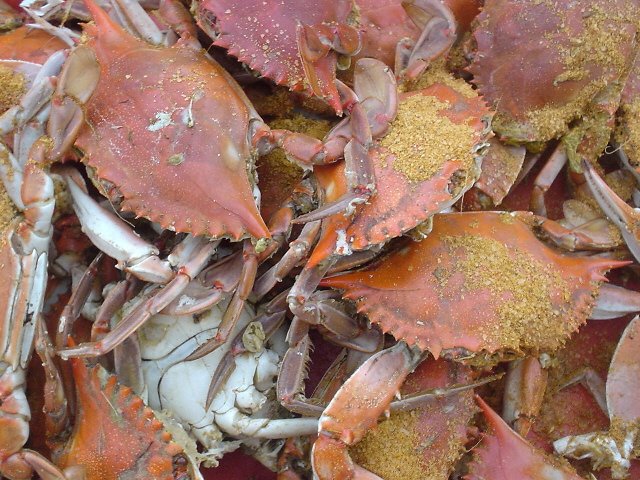

Blue crabs-harvested as hard shell crabs, peeler crabs and soft shell crabs-are the most valuable commercial fishery in the Bay, earning millions of dollars of revenue each year. More than one-third of the nation’s blue crab catch comes from the Chesapeake Bay. Loss of habitat, particularly of underwater grasses and marshes, is a primary concern for the blue crab population in the Bay. But environmental conditions including water quality, weather patterns and habitat also cause the abundance of blue crabs to fluctuate from year to year. Harvest is a primary source of blue crab mortality in the Chesapeake Bay. The total number of blue crabs in the Chesapeake BayĪccording to data from the Winter Dredge Survey, an estimated 227 million blue crabs lived in the Bay in 2022, which is a 19% decrease from 282 in 2021. The crabs that are collected at each of the survey's 1,500 sampling sites are measured, weighed, sexed and aged, and the data is used to estimate the number of young crabs entering the population, the number of female crabs old enough to spawn and the total number of harvestable crabs in the Bay. Because blue crabs are so important to the region's ecosystem and economy, both Maryland and Virginia monitor the blue crab population through an annual Winter Dredge Survey. How many blue crabs live in the Chesapeake Bay?ĭata provided by the Maryland Department of Natural Resources and the Virginia Institute of Marine Science.įor most of the last two decades, the total number of blue crabs in the Chesapeake Bay has lingered below the long-term average. Over the past 60 years, blue crabs have dominated Chesapeake Bay fisheries, with an estimated one-third of the nation’s blue crab catch coming from the Bay.

Scientists are concerned that a decline in the Chesapeake Bay blue crab population could negatively affect salt marsh habitat, as periwinkle populations feed on marsh grasses.īlue crabs also support a large recreational fishery in the Bay, and are the estuary's most valuable commercial fishery. They eat bivalves (i.e., clams, mussels, oysters), smaller crustaceans, freshly dead fish, plant and animal detritus and almost anything else they can find.īlue crabs feed on marsh periwinkles (snails), helping regulate periwinkle populations. Soft-shell crabs that have just molted are particularly vulnerable to predators.īlue crabs are among the top consumers of bottom-dwelling organisms, or benthos. Striped bass, red drum, catfish and some sharks depend on blue crabs as part of their diet. Juvenile and adult blue crabs serve as food for fish, birds and even other blue crabs. Water quality improvements, seagrass restoration and proper fishery management will help maintain this valuable resource.Īs both predator and prey, blue crabs are a keystone species in the Chesapeake Bay food web.īlue crab larvae are part of the Bay’s planktonic community, serving as food for menhaden, oysters and other filter feeders.
#BLUE CRAB MARYLAND DRIVERS#
However, the blue crab population has fluctuated over time in response to fishing pressure and environmental drivers including pollution and habitat loss. The Bay’s signature crustacean is one of the most recognizable critters in the watershed, supporting valuable commercial and recreational fisheries. Steamed in garlic butter sauce and served with toasted crostini, these clams serve as a captivating opening act for crabs.There is nothing more “Chesapeake” than the blue crab. Other connoisseurs enjoy pairing a bay half bushel with a hefty bag of Littleneck Clams. Start 2023 by sharing a meal that keeps to the Chesapeake Bay Tradition. Crab Cakes, a robust and delicious spread. With the regal of a perfect feast to usher in the new year, chefs search for crab dinner packages like the Double Dozen Large and Maryland 4 oz. Our boats also search out waters with active crabs for your New Year’s Feast. Female Sooks traditionally swim further out into the ocean, but both need to find brackish water, less than 30% salt. Still other crabs pack their shells and head to the bay’s mouth at the Atlantic Ocean. They back-up their hind swimming legs and hide in the soot, waiting for spring. Their vacation spot lays deep within the bay’s bottom muddy floor. Frigid winds hitting Blue Crab Trading’s wooden docks, coupled with piercing currents, rushing around the dock’s pilings means the blue crab has played the part of the “snowbird” and swam to safer waters.


 0 kommentar(er)
0 kommentar(er)
